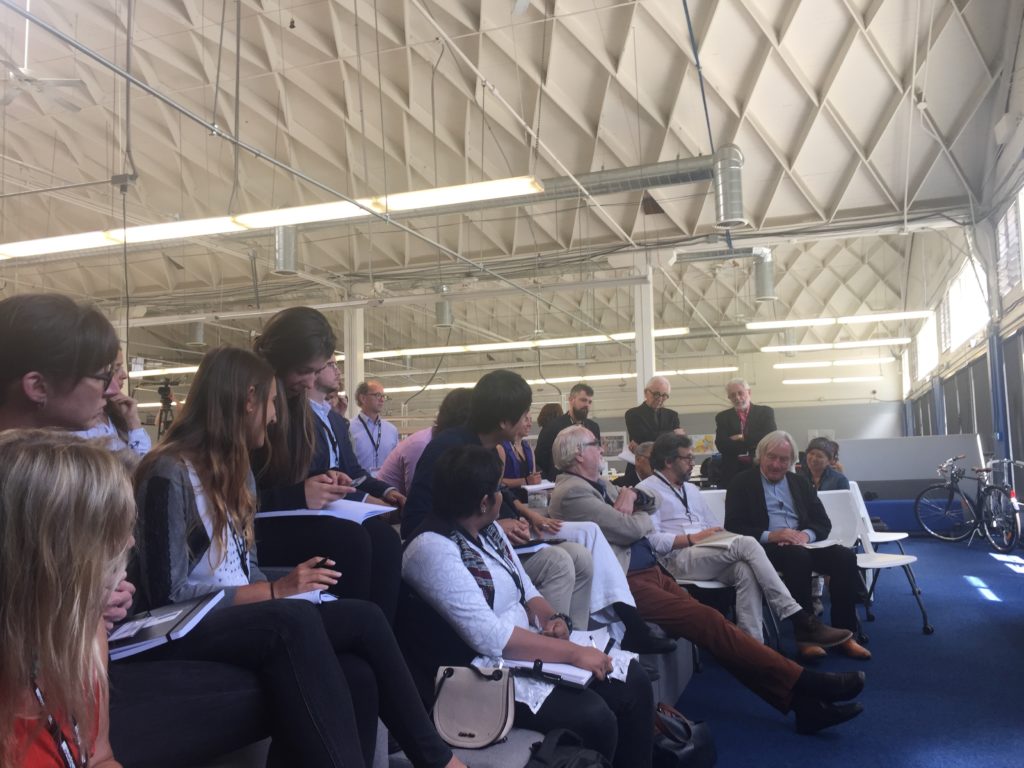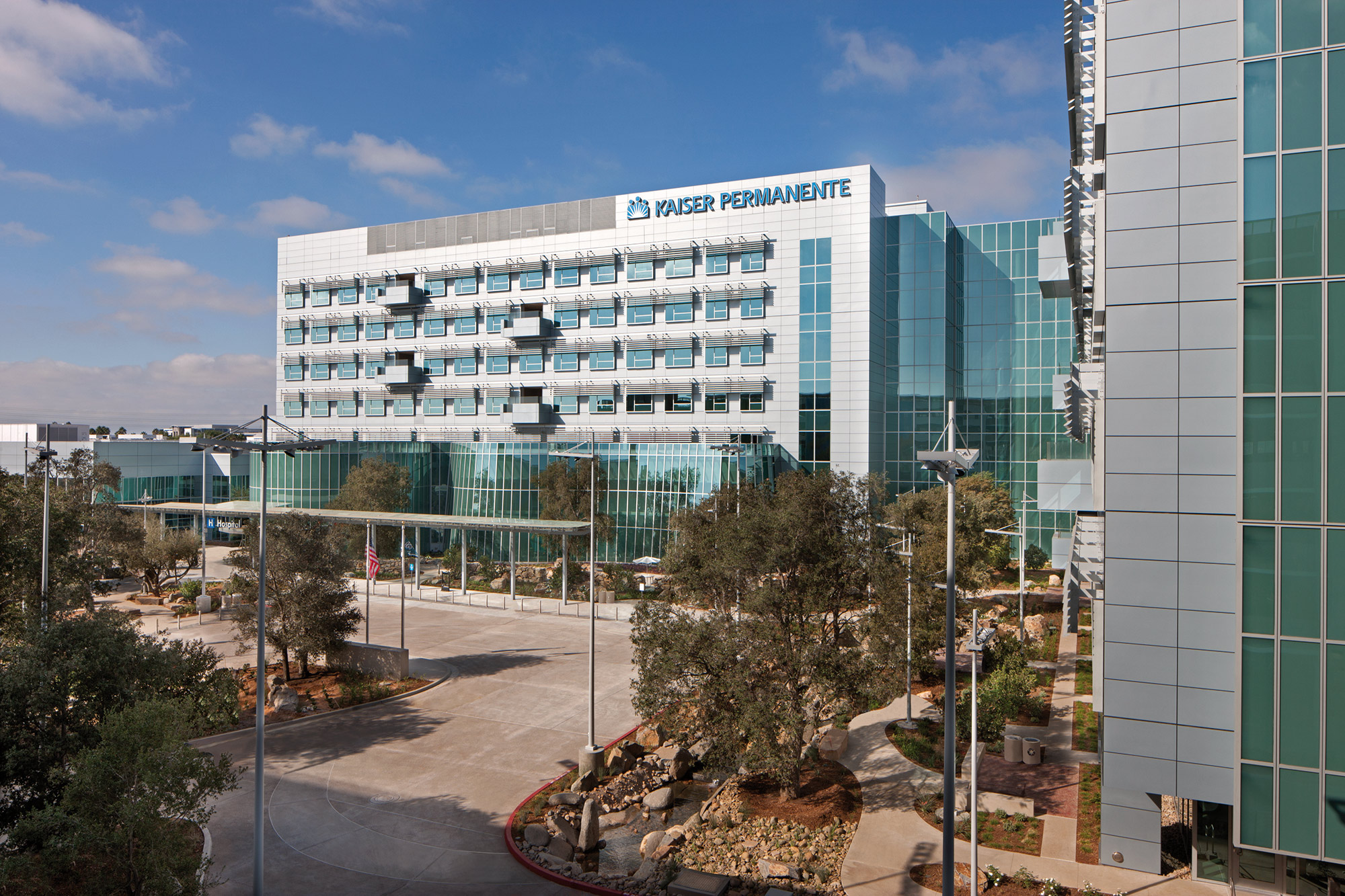Design-Build Project Delivery: Trust, Transparency and Flexibility

By Esther Chao
Over the past five years, CO Architects has partnered with MATT Construction to design and build six unique and highly specialized laboratory renovations at the California Institute of Technology–Caltech. These projects are unique not only because of the architecture and building systems designed for world class researchers, but also because of the long-standing design-build relationship among CO, MATT and Caltech. All six projects were completed with a design-build project delivery method, which means that the architect and contractor work together as one team, instead of the traditional method of individually contracted parties, to design and construct the complete project. I have found this method to be streamlined and successful for producing innovative, high-quality architecture.
In the fall of 2016, I started working on two of CO’s Caltech projects in the von Kármán Laboratory building—a lab renovation for Aerospace Engineering Professor Soon-Jo Chung, and the interdepartmental maker-space, the Center for Autonomous Systems and Technologies (C.A.S.T.) These projects create experimental research space for graduate students and professors to design, prototype, and test drones, robots, satellites and other technologies. I was very excited and interested to work on such a unique program and specialized architecture. Although I had not worked with Caltech or MATT Construction before, I quickly found that all of the team members, including the consultants from Integrated Engineering and John A. Martin & Associates, already had a very efficient system for collaborating.

When I first met the team of engineers and contractors, I was a little overwhelmed that they already had ideas for the design of the space. Everyone understood what Caltech wanted in their labs, so when they communicated, they were already on the same page and could work quickly. As a team, they helped me get adjusted to the project personalities and requirements; from the particular cylinder rack Caltech prefers to what door manufacturer is standard and how we should sequence the schedule. After assimilating to the workflow, the process was easy; I could call up any team member for any request or question. Caltech is also familiar with the design-build team and trusts their judgement in design matters. I think that these collaborative relationships were a critical factor in creating a project budget, schedule, and process that afforded Caltech the high-quality, efficient design and construction they desired.
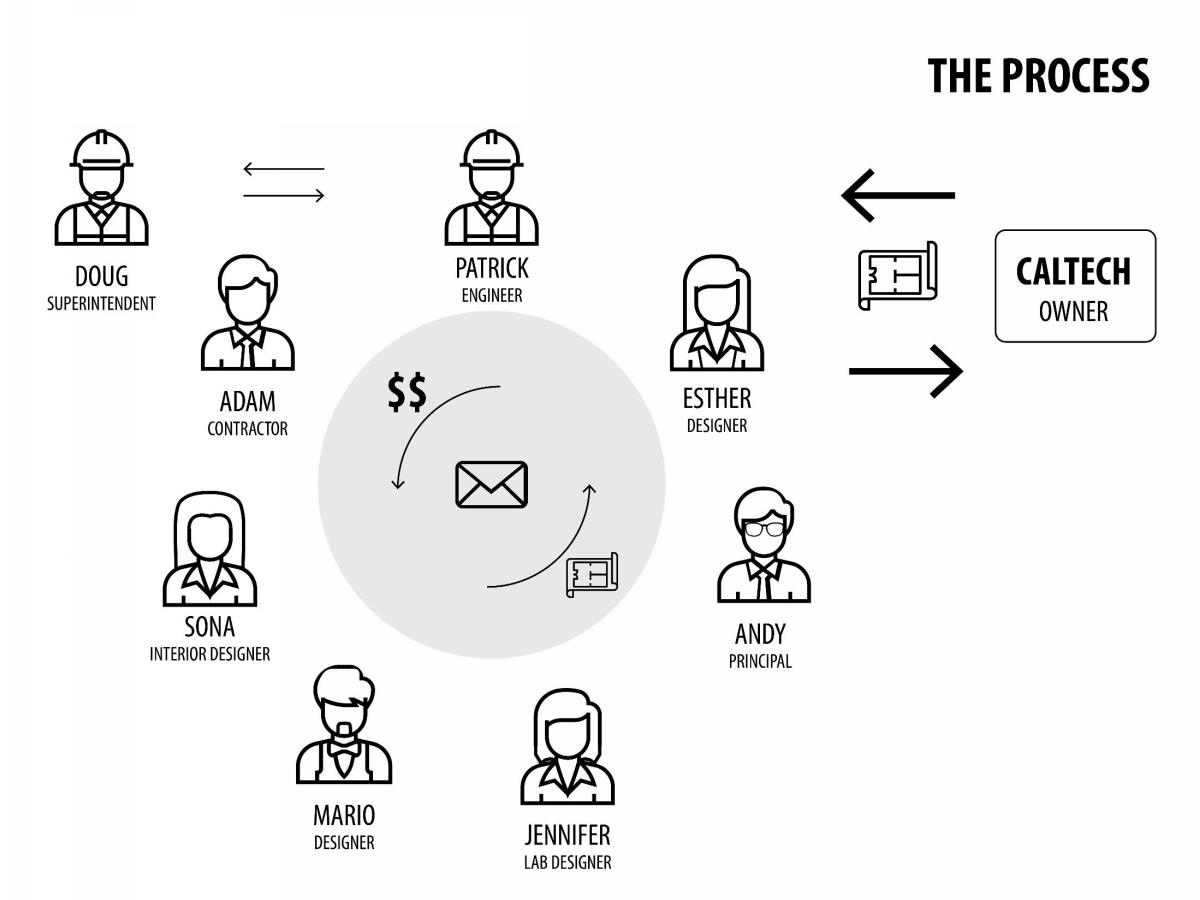
One of the advantages I found in the design-build process was that we were able to be flexible with Caltech’s specific research needs. Having worked together before, CO, MATT, JAMA and IE were prepared for, and anticipated, the changes, updates and substitutions that could arise throughout the project. The team could coordinate quickly on the phone or via email to produce designs, reviews, and revisions without delay. The design-build relationship also allowed us to create unique and complex architecture because we could work closely with the contractor and their subcontractors. We often coordinated exact dimensions and construction details with the contractor, engineers and subcontractors to verify that the design was feasible to construct, structurally safe, within budget, and aligned with the schedule. Working together allowed everyone to input their recommendations to achieve the best result. This process allowed CO to put forth creative designs like the slatted ceiling in the lobby or the exterior canopy in the drone arena.
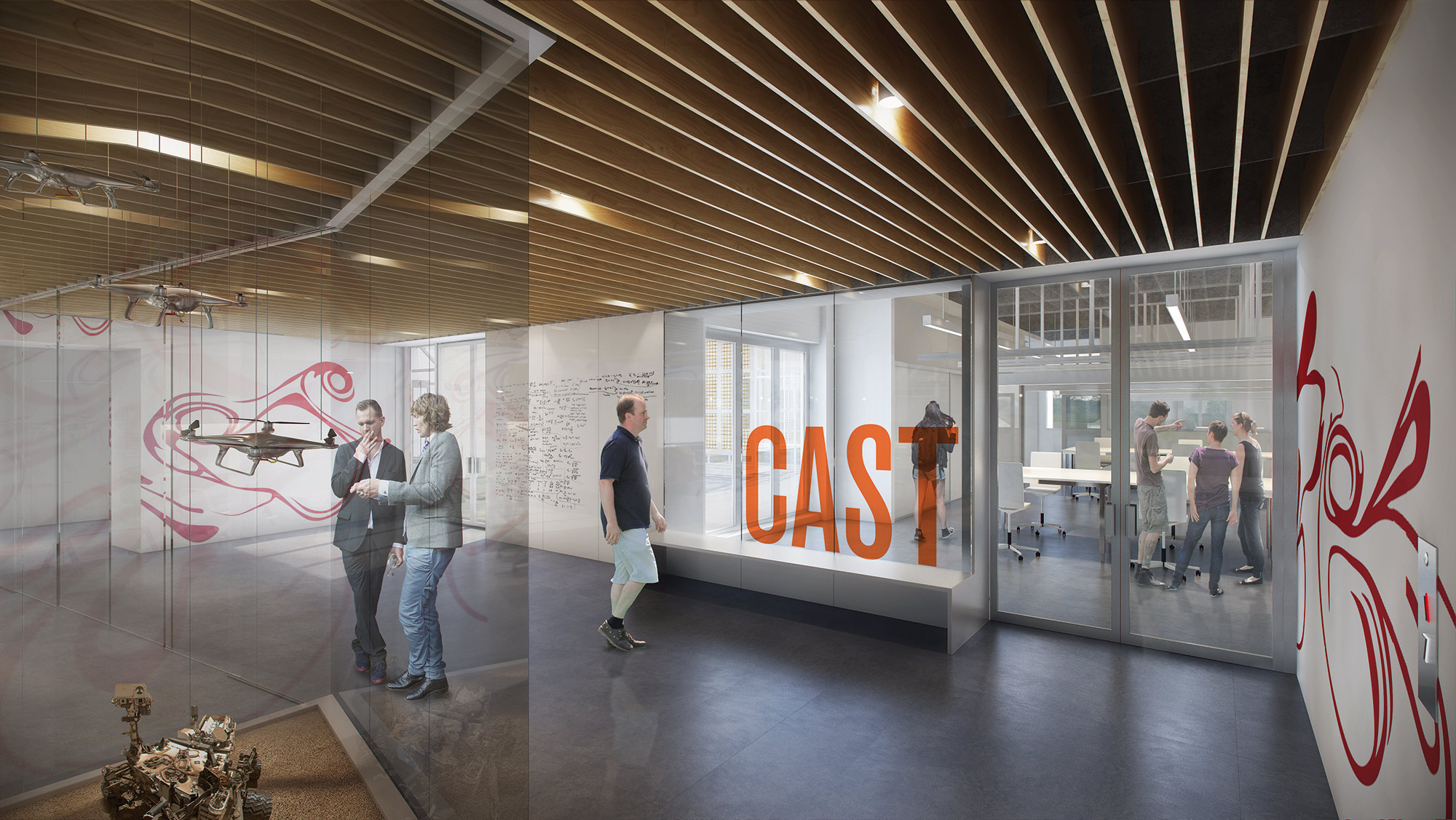
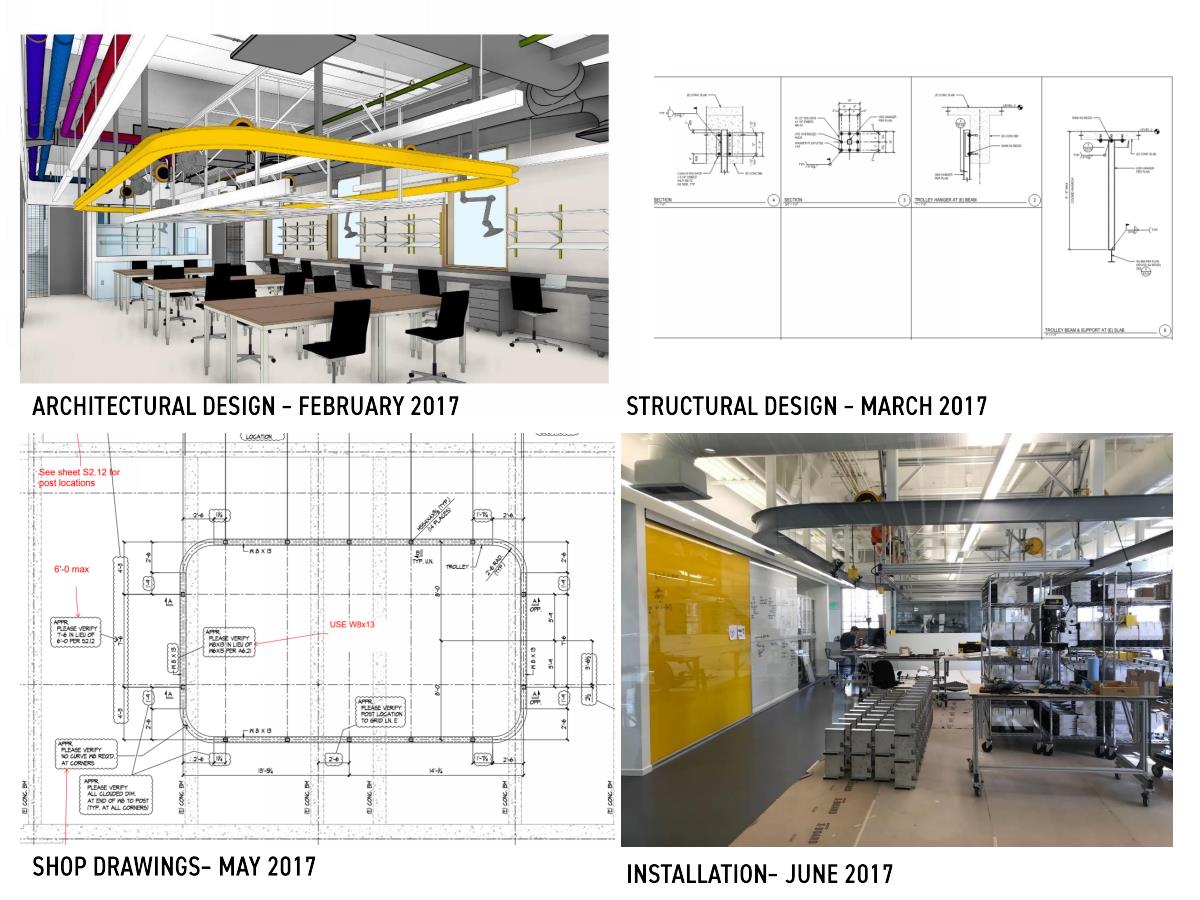
MATT Construction gave us key information about field conditions, construction process, schedule and cost that we normally cannot access. They shared their concerns and suggestions for the designs so we could produce a better fitting and more cost-effective result. We communicated our design intent and saw a quality, finished result from our conversations. The design-build team consulted each other when problems arose and worked together to find the best solution. The trust between the team encouraged us to rely on each other and focus on producing our best work efficiently.

As a young architect, these Caltech projects have been some of my first exposures to a complete design and construction process. The quick results, coordination and problem solving with the design-build team, along with the experience of seeing the design become reality, has made me even more excited about architecture. The interaction with all of the team members was easy and natural, which gives me confidence in future collaborations. I hope to carry the successes of this project to our firm and to the practice of architecture.
